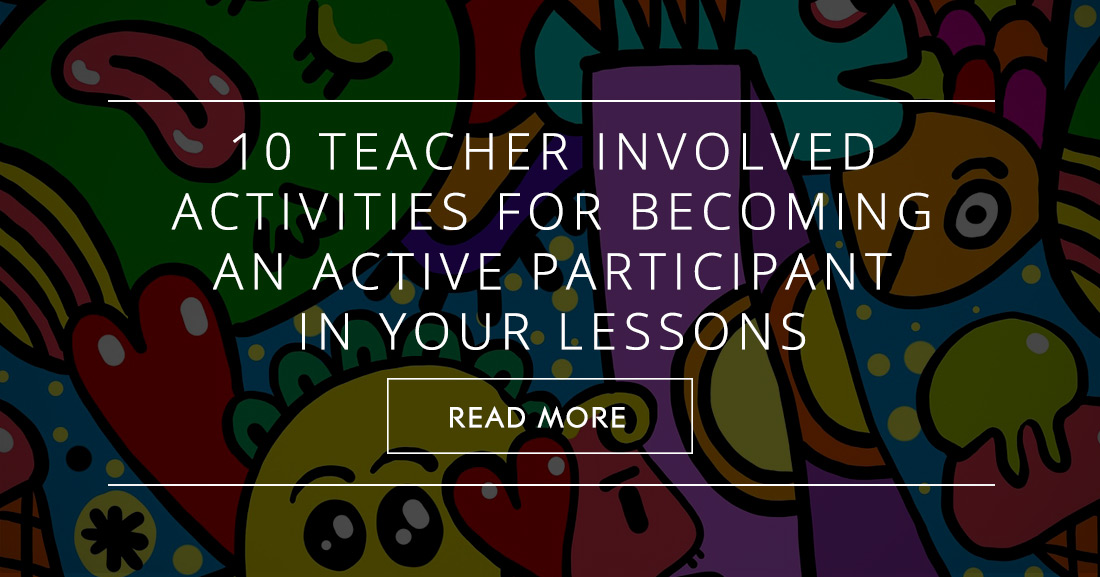Just Say No to Yes and No: the Why's and How's of Avoiding Closed Questions


One common rule given to new English teachers is to keep things student-centered. Limit teacher talking time. Be the guide on the side, not the sage on the stage.
While there are many good reasons for this, such as encouraging student participation and learner autonomy, I propose that from time to time it’s wise to inject yourself into an activity. Students are naturally curious about their teacher, and occasionally would like to interact with the teacher as another person.
Students are naturally curious about their teacher, and occasionally would like to interact with the teacher as another person.
By teacher involvement, I don’t mean teacher-fronted activities, where the teacher tells a story, explains grammar, or does a dictation. I mean that the teacher takes part in an activity, either cooperating or competing with the teacher.
Here are some examples of how this can work.
In a monolingual class, ask one student to speak to the class on a subject they choose for one minute. After the talk, students have to ask you 5 questions, and see how much you understood. Afterwards, they can give you a grade.
This is a fun way to adapt a picture from your coursebook, preferably one with a lot of detail. Tell your students to study the picture in their books for 2 minutes. Encourage them to look carefully at every detail in the picture. Next, ask them to pile their books in the corner of the room. Make a simple statement about the picture (The man is wearing a gold watch) that is either true or false. Ask them to tell you if the statement is true or false. Repeat a few times. Next, ask them to pick up their books and get into pairs. Tell them to make their own statements about the picture. One student should close his/her book, while the other gives 4 or 5 statements, which the first student decides are true or false. Then they switch roles and repeat. Now for the teacher involved part. Tell the class it’s their turn to quiz you. (They should have some extremely tricky sentences ready by now.) Close your book and put it on a desk far away from you. Answer their questions as best you can without looking at the book.
Ask students to get together for a few minutes and decide on a secret word, but not to tell you what it is. It can be a word that you recently covered in class, or something they learned out of class. When everyone is ready, tell them that you want them to use this secret word at least five times. You will have to guess what the word is. Continue with your lesson plan. At the end of class, guess the word. Were you right?
In this type of activity, the teacher is one team battling against the entire class. Here are two examples:
Ask students to think of a popular holiday in their country. Put student in pairs, and tell them to create some questions about the holiday. While they are doing this, think of some good questions about a popular holiday in your country. In a few minutes, they will quiz you about the holiday, and also you will quiz them about a holiday from your country. Each team gets a point for answering a question correctly.
Assign for your class to go online and find an interesting language learning game they would like to play in class. You do the same. In the next class period, play their game and your game. Have a discussion afterwards. Which game was better? Why?
Ask your students for common expressions in their language that are the equivalents of expressions found in your coursebook. Get a student to come up and teach you several phrases. Say the words in the students’ language, but ask questions in English, such as “Am I saying it right?”, “How’s my pronunciation?” “Is that correct?” You can ask them to quiz you again at the end of the lesson.
For homework, assign students to learn how to do something, such as how to draw an elephant, or a unique way to tie shoes, or the best way to cut an onion. In the next class period, ask one student to come to the front and give a brief presentation. When the presentation is finished, do the action and see if you can do it correctly.
Put students into pairs and ask them to work together to produce 3 questions they would like to ask you, their teacher. Emphasize that the questions must be polite and respectful. After they have all composed 3 questions, tell them that you are going to give them 2 minutes to ask their questions. You will listen carefully, and then after the two minutes have elapsed you will answer some or all of the questions. (Extension: you can repeat the activity with a student taking your place)
Next time you are checking the answers to comprehension questions to a reading in your coursebook, tell the class that you will allow every other student to ask you a question in addition to answering a comprehension question. Go through the questions, and every other time you check an answer, tell the student “Ok, now you get to ask me a question.” If the question is impolite or too personal, you can just say “no comment” and move on.
Put a sample question pattern on the board such as, “If ………, what would you do?” or “Would you rather ….. or ….?” Give students one or two examples of this type of question. Then ask them to write down five questions they would like to ask someone in the class. Give them at least 10 minutes to write some clever questions, and encourage them to be creative. When everyone is finished writing, ask a student a question based on the pattern you put on the board. After the student answers, tell him or her to choose another student and ask him/her a different question. Then tell that student to ask you another question. Continue this 3 stage process, until at least 3/4 of the class has spoken.
How did the students react? Did you feel differently being part of an activity?